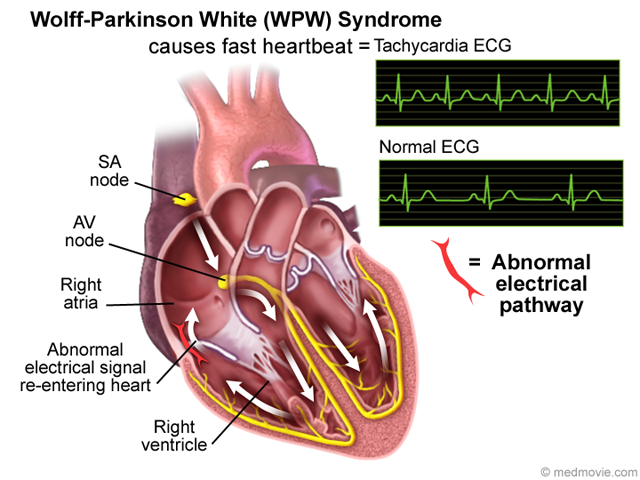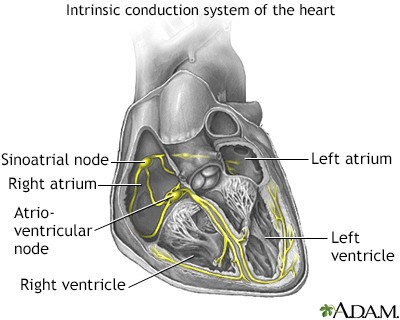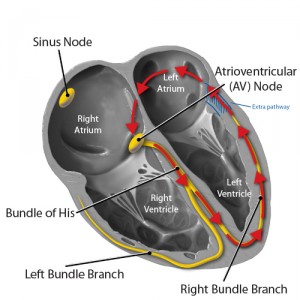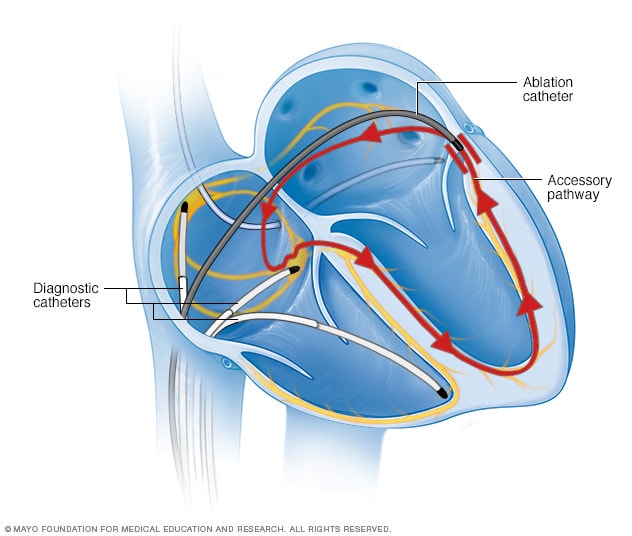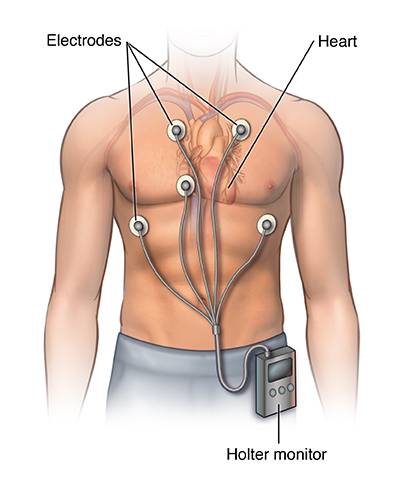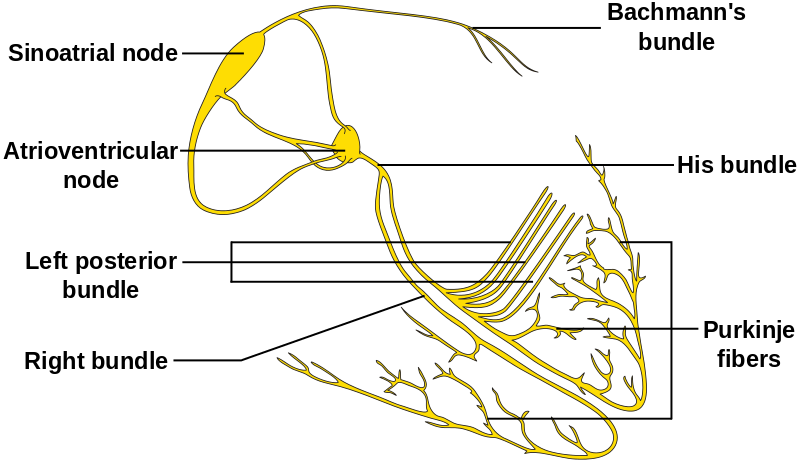Heart Electrical Problems Wolff

Also known as heart block a conduction disorder is a problem with the electrical system that makes your heart beat and controls its rate and rhythm.
Heart electrical problems wolff. Normally the electrical signal that makes your heart beat travels from the top of your heart to the bottom. They are normal heart muscle not specialized electric tissue and they may. A person with wolff parkinson white syndrome has two electrical pathways inside their heart instead of one and the extra pathway can lead to instability in the electrical control mechanism of the heart. It is a rare condition of irregular heartbeat or arrhythmia.
This can lead to a rapid heart rate which is called tachycardia. This can cause short circuits making the heart speed up and beat 150 beats a minute or more. Wolff parkinson white syndrome is characterised by attacks of rapid heart rate tachycardia. Wolff parkinson white wpw syndrome is a birth defect in which the heart develops an extra or aberrant electrical pathway.
When you have wpw along with your normal conduction pathway you have an extra pathway called an accessory pathway. Wolff parkinson white wpw syndrome in wolff parkinson white wpw syndrome an extra electrical pathway between your heart s upper and lower chambers causes a rapid heartbeat. Heart arrhythmias uh rith me uhs may feel like a fluttering or racing heart and may be harmless. Talking about the cardiac electrical system and abnormal heart rhythms can be very confusing.
The episodes of fast heartbeats usually aren t life threatening but serious heart problems can occur. Rapid heart rates may be due to wiring problems with the electrical pathways in the heart. The condition which is present at birth is fairly rare. The heart has an electrical system that works a certain.
Wpw is an electrical abnormality in the heart that may be associated with supraventricular tachycardia fast heart rate originating above the ventricles. Heart palpitations are one possible symptom of wolff parkinson white syndrome.
